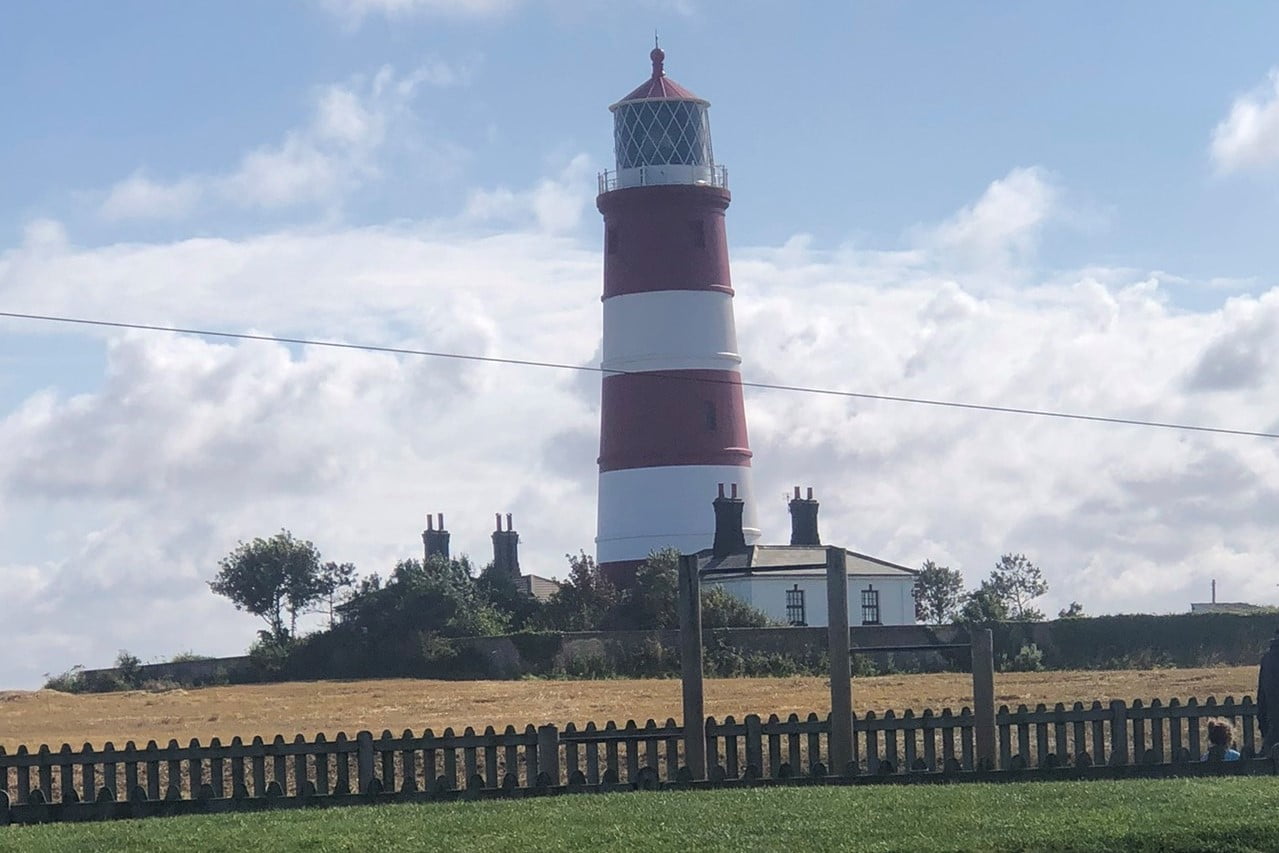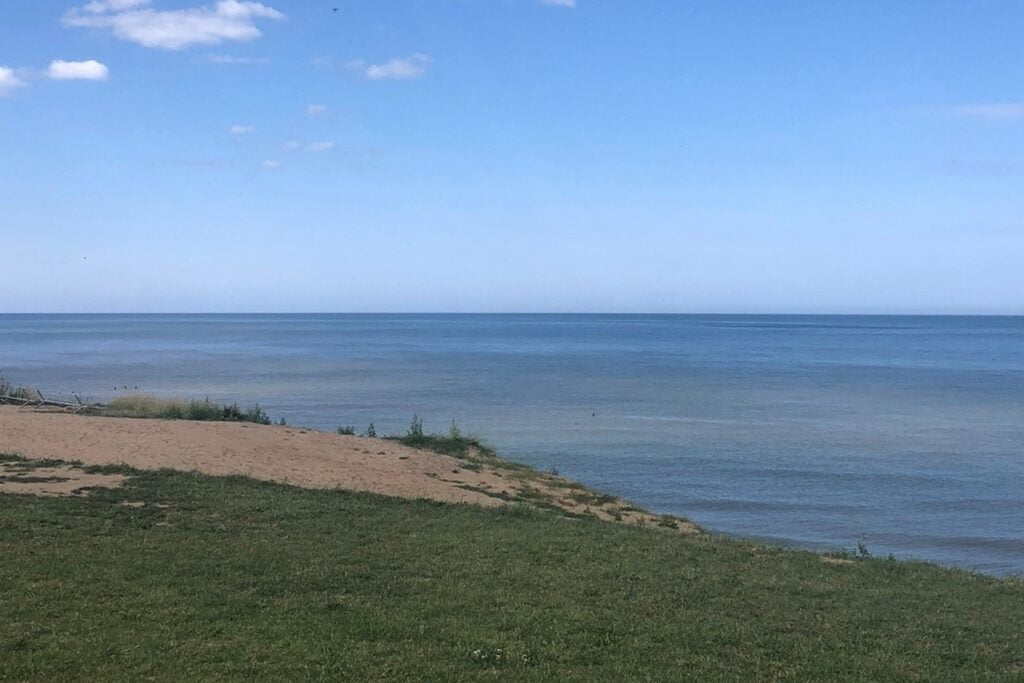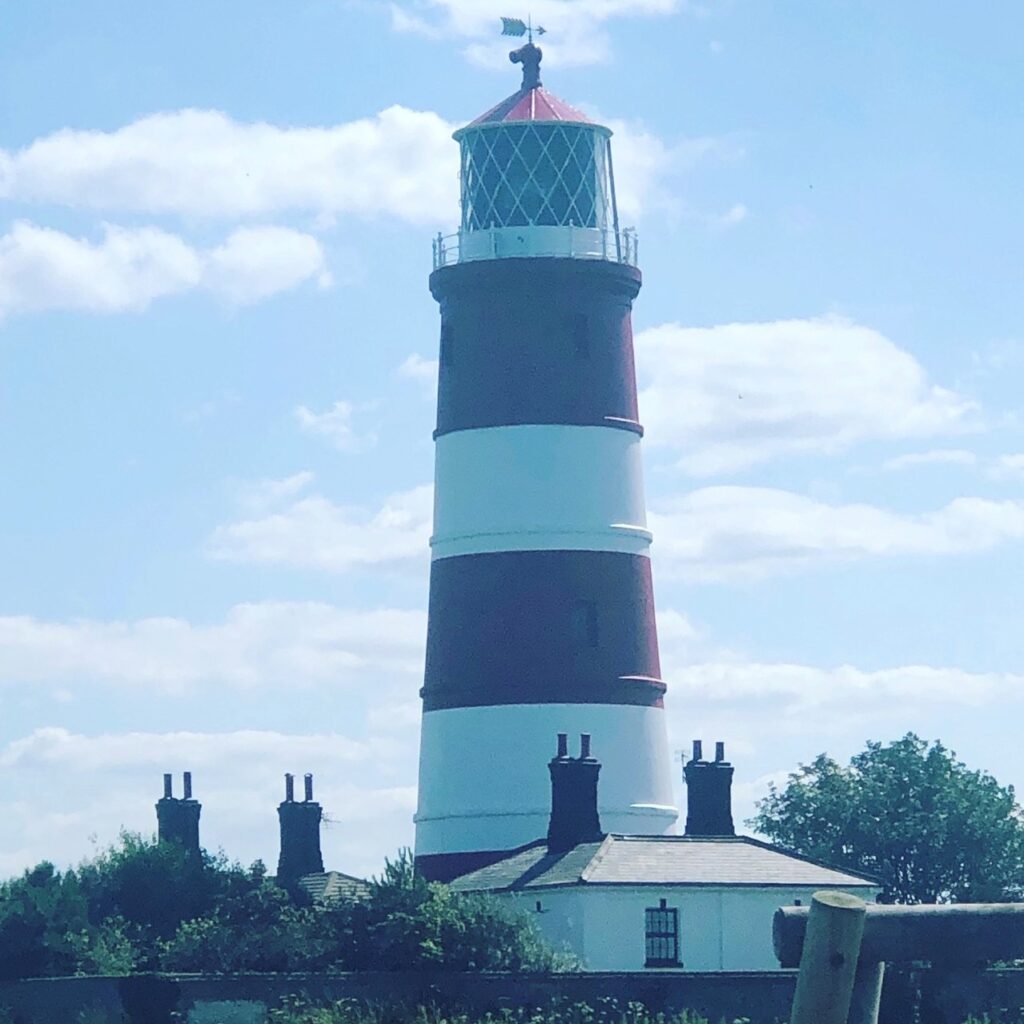
Happisburgh – A Village Being Lost to the Sea

Happisburgh is not an outlier with the UK coastline occupied by towns, villages and houses dealing with an age-old problem – coastal erosion. Most communities raise money or receive government funding to put coastal defences in place and protect their homes for as long as possible.
Unfortunately, Happisburgh is a tiny village with no viable coastal defence solution and eventually it will become a new Hallsands. Let’s discover Happisburgh and find out why it will one day be reclaimed by the sea.
Where is Happisburgh?
Happisburgh is a tiny coastal village on the north coast of Norfolk, famous for its lighthouse and large open beach.
Happisburgh itself is a little bit of a split village with most residences on the main road and a safe distance away from the current coastal erosion. There are outlying buildings including the lighthouse and Happisburgh Manor that are much closer to the coast.
Essentially, properties on the main high-street (The Street) are pretty safe whereas properties around Lighthouse Lane and especially Beach Road are at greater risk.
When the sea finally takes Happisburgh it will likely only be the buildings nearest the coastline. This is similar to Hallsands which has residential buildings on the cliff top today and more historic houses now all but lost to the sea (although fragments of these buildings remain).

The History of Happisburgh
Unlike Hallsands, there is a more extensive history associated with Happisburgh. Given its small population and size you may be surprised to learn Happisburgh was a small community as far back as 1086 when it was listed in the Domesday Book.
The Norman Conquest and Establishing a Church
After the Norman conquest of England, Happisburgh was inhabited by Normans who built a church. This church would be knocked down and rebuilt in the 1400s and become known as St Mary’s Church. The rebuilt church features an unusually tall sea-facing tower that seaman can use as a landmark.
By 1790, it was decided the church tower alone wasn’t enough to keep mariners safe from the treacherous sandbanks and Happisburgh Lighthouse was built. The Lighthouse is the oldest working lighthouse in East Anglia and is independently operated. Today it draws plenty of tourists and you can find great parking at the end of Beach Road with toilet facilities and access to the beach.
The Famous Red and White Lighthouse
Happisburgh Lighthouse is open to the public occasionally, but open days are infrequent and limited to summer months. It is best to check the official website if you intend to take a look inside the lighthouse.
The Royal National Lifeboat Institution (RNLI) operates a lifeboat station from Happisburgh due to its easy access to the north coast of Norfolk and the North Sea.
The Manor House
More recently, Happisburgh Manor was built in 1900. It is a Grade II listed building as is the Happisburgh Lighthouse. St Mary’s Church is a Grade I listed building. All three buildings are at great risk due to the ongoing coastal erosion.
Prehistory of Happisburgh
Recently, Happisburgh became an area of archaeological importance due to prehistoric finds on the beach. These finds included bronze age flint tools and footprints dating back 800,000 years ago.
This archaeological discovery is evidence of the earliest known habitation in Britain. Prehistoric humans were likely migratory, moving to coastal areas for coastal foraging when other food sources weren’t readily available. Alternatively, humans may have inhabited Happisburgh for hundreds of thousands of years.
Either way, this archaeological discovery is important for understanding human history before written records.
Visiting Happisburgh
You can easily spend half a day in Happisburgh and if you wanted to push it or laze on the beach you could stretch it to a full day visit.
The carpark gets busy during the summer months and is a pay and display carpark. You will also need to be patient getting to and from the carpark as Beach road is a single track lane that doesn’t leave much space for manoeuvring.
The village itself is very quiet with a local shop. You will be hard pressed to find something to occupy yourself in Happisburgh ‘proper’. Instead you should visit the church and beach and if possible take a tour of the lighthouse.
When Will Happisburgh be Lost to the Sea?
If the rate of coastal erosion continues, the coastal properties of Happisburgh will be lost within the next hundred years.
Residents close to the coast or in the ‘at risk’ zone have indicated they intend to stay in their homes as long as possible. This is the same effect observed when Hallsands was lost to the sea and in that case, it was highly detrimental to the inhabitants, especially when a large storm hit.
Over the next 500 years if the trend continues, the whole of Happisburgh may be lost to the sea.
What is Causing Happisburgh to be lost to the Sea?

It is easy to jump the gun and assume climate change or global warming is to blame for the level of coastal erosion at Happisburgh. Especially if you consider the beach has existed for at least 800,000 years.
However, the truth is, sea levels rise and fall over time and the beach will not have been extent for the entire 800,000 year history. For example, there are many coastal temples from Ancient Greece and Ancient Egypt that have long been underwater.
Absent of meaningful sea defences, any coastal area will be subject to the elements and at risk of being lost – with or without climate change.
Of course, an argument can be made that climate change exacerbates the situation. Regardless, even if we were to magically fix the climate change situation, Happisburgh would still be lost to the sea.
Can Happisburgh be Saved?
Yes, Happisburgh can be saved if it receives enough investment to create sea defences. The problem is the level of investment required would be far too high to make saving the village economically viable.
A proposition has been put forward to remove humans from the area and let it become a nature reserve. Doing so would allow nature to work its magic and offer a better level of protection than is available with humans living there.
This is because humans won’t allow nature to flourish in the way needed to help the natural environment become more resistant to the coastal erosion.
The inhabitants have rejected this idea and as mentioned do not wish to leave. This leaves the human and natural elements of the community at great risk and short of a miracle, nothing will save the village from the sea.